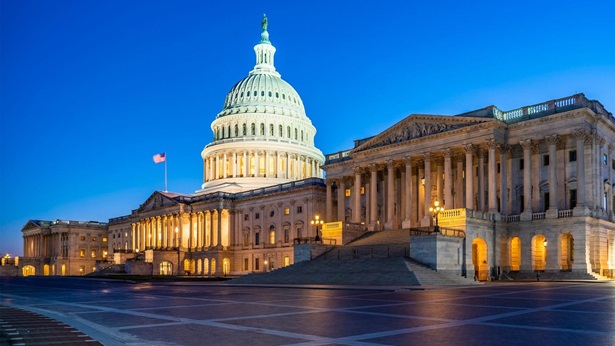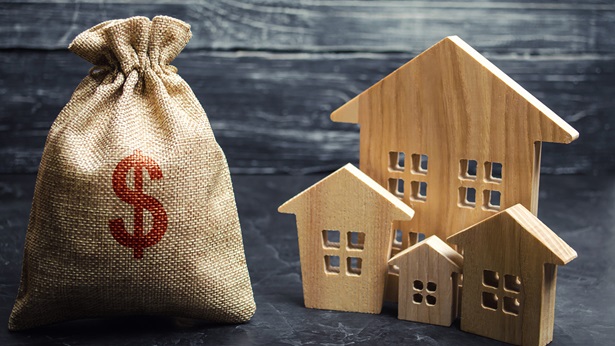How Tariffs Impact the Home Building Industry
Scarcity and an acute, sustained rise in building material costs — from softwood lumber to distribution transformers — are driving up the cost to construct homes and harming housing affordability. There are several factors driving this trend, notably inflationary pressures and global factors, including trade uncertainty.
NAHB estimates that $204 billion worth of goods were used in the construction of both new multifamily and single-family housing in 2024. $14 billion of those goods were imported from outside the U.S., meaning approximately 7% of all goods used in new residential construction originate from a foreign nation.
Import Tariffs on Building Materials
A tariff is essentially a tax on an imported good, meaning the importer pays an additional cost for importing such an item from another country. This effect raises the price of imported products, where the price increase is then typically absorbed by the importer or passed on to the end consumer of the good, usually in some combination. For most goods, the cost is passed on the end-users, meaning consumers. So tariffs on building materials raise the cost of housing, and consumers end up paying for the tariffs in the form of higher home prices.
For example, if a retailer imports a $500 washing machine from a country subject to a 25% tariff, the retailer will owe $125 in tariffs to the U.S. government. This is what could happen next:
- The retailer could try to get the importing country to pay for some of the tariff cost by telling that country it will pay less for the product.
- The retailer could absorb the cost of the tariff and reduce its profit margin.
- The retailer could raise the price of washing machines in its stores.
- The retailer could do any combination of the above options.
For most goods, the cost is passed on the end-users, meaning consumers. In this case, the consumer would pay an extra $125 for the $500 washing machine. So tariffs on building materials and home appliances raise the cost of housing, and consumers end up paying for the tariffs in the form of higher home prices and goods.
Higher Canadian Lumber Tariffs Coming Later This Year
Softwood lumber is a key component in home building. Canada accounts for roughly 85% of all U.S. softwood lumber imports and represents almost one-quarter of the supply in the U.S. The Commerce Department is currently imposing 14.5% tariffs on Canadian lumber and has signaled that it plans to more than double 14.5% tariff rate later this year to 34.5%.
These duties are completely separate from the global reciprocal tariffs initially announced by President Trump on April 2 but have since been paused. When the president made his announcement, NAHB scored an important win when Trump chose to continue current exemptions for Canadian and Mexican products, including a specific exemption for lumber from any new tariffs at this time.
It’s clear we are not out of the woods yet on the possibility that Canadian lumber tariffs could run even higher than 34.5% later this year. The White House issued an executive order in March commanding the Commerce Department to investigate the national security impacts of imports of timber and lumber.
Additionally, numerous raw materials and components, ranging from steel and aluminum to home appliances, are sourced from nations across the globe that are subject to Trump’s latest tariffs. These tariffs are projected to raise the cost of imported construction materials by billions of dollars, depending on the specific rates. For some materials, where imports are critical to supply, prices could see dramatic increases, adding layered costs that could substantially impact builders’ ability to deliver new projects.
The cost of building materials has already risen by 34% since December 2020, which is far higher than the rate of inflation. Data from the NAHB/Wells Fargo Housing Market Index (HMI) March 2025 survey reveals that builders estimate a typical cost effect from recent tariff actions at $9,200 per home. Keep in mind this survey was conducted before Trump announced his reciprocal tariffs on April 2.
NAHB’s Efforts to Combat Harmful Tariffs
For years, NAHB has been leading the fight against tariffs because of their detrimental effect on housing affordability. In effect, the tariffs act as a tax on American builders, home buyers and consumers. Moving forward, NAHB will continue working with all relevant stakeholders to roll back tariffs on building materials, boost sawmill production and increase the domestic supply of timber from federally owned lands in an environmentally responsible manner to help fix building material supply chains and ease costs.
Recent efforts include:
- NAHB filed a comment letter on March 31 with the Department of Commerce to argue that housing is a critical component of national security and that no further lumber tariffs should be imposed in the name of national security.
- On March 5, NAHB Chairman Buddy Hughes met with senior staff for U.S. Trade Representative Jamieson Greer to discuss how tariffs on building materials will drive up the cost to construct homes and harm housing affordability and continued to engage with the administration to ensure Canadian lumber was included in the March 6 pause on tariff increases.
- The day before, Hughes spoke on the same topic while testifying before the House Financial Services Subcommittee on Housing and Insurance regarding the need to increase America’s housing supply.
- NAHB Chief Advocacy Officer Ken Wingert and Senior Federal Legislative Director Alex Strong met with Quebec Premier Francois Legault and other top Canadian officials on Feb. 11 in Washington. Wingert told Legault the U.S. needs Canadian lumber and that NAHB supports Canadian efforts to reach a new trade agreement between the two nations that is fair, equitable and would eliminate tariffs.
- NAHB sent a letter to the White House on Jan. 31 urging the president to exempt critical building materials from his proposed 25% tariffs on Canadian and Mexican goods
- With NAHB’s strong backing, the House in late January passed the Fix our Forest Act, legislation that would contribute to better forest management practices, help strengthen the nation’s housing supply chain and promote affordable housing opportunities for all Americans.
- NAHB has been actively getting our message out to the media on the issue of tariffs. NAHB CEO Jim Tobin has been interviewed by several broadcast outlets including CBS News, CNN, Fox Business Network and Yahoo Finance TV. NAHB spokespeople have also been quoted in The Wall Street Journal, CNN, The New York Times, CNBC, Barron’s, Bloomberg, The Washington Post, Associated Press, Business Insider and other notable news organizations.



